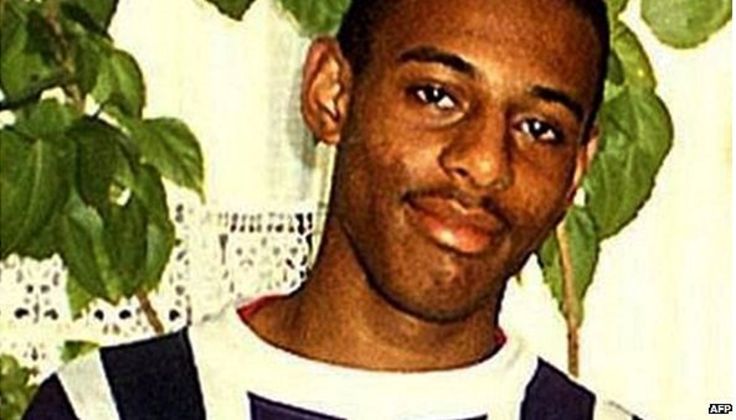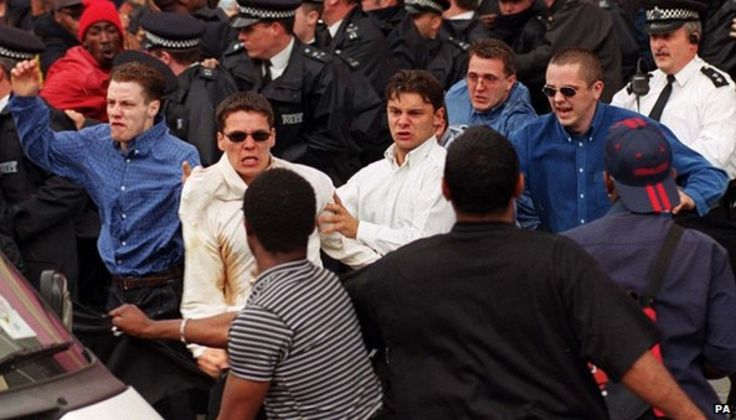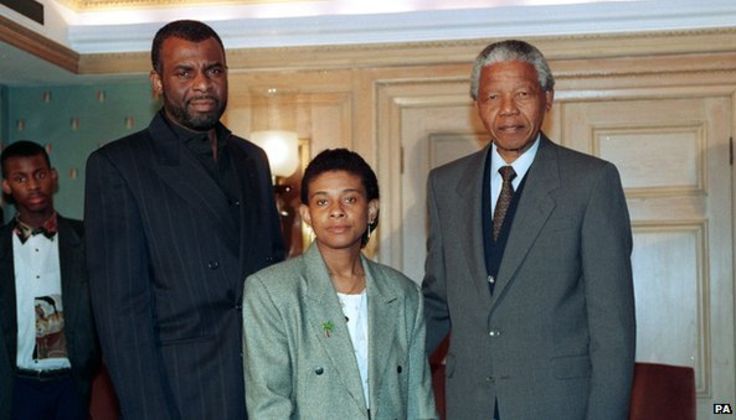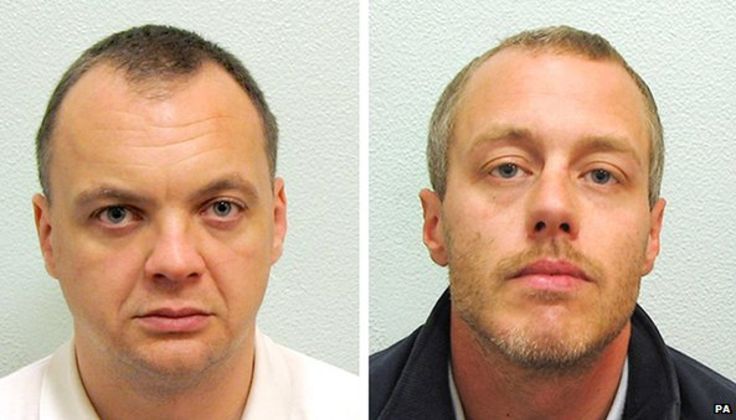
Stephen Lawrence was born on 13th February 1974, he was the oldest of three siblings. Stephen was a talented artist and athlete he had dreams of being an architecture when he grew up.

Photo from BBC
Stephen Lawrence
On the April 22nd, 1993, Stephen finished school and went to look round some shops with his friend Duwayne Brooks. Later the boys went back to Duwayne’s uncles where they spend the night playing games. Before long, it was reaching 10pm, the boys rushed out the house to go home as Stephen had to be at home by 10.30pm. Instead of getting their usually bus they decided to take several short buses to save time. At 10.25pm, they arrived at Eltham where they would take the bus to their home but there was no sign of the bus they had to catch. By 10.35pm there was still no bus, so Stephen decided to walk up the road to a junction to see if he could see the bus. When he reached the junction there was no sign, so he started to set back to Duwayne who was waiting at the bus stop. Stephen got half way when he started to hear shouting, he looked across the road where he saw 5/6 white males running towards him whilst shouting racist insults. Within seconds the group attacked Stephen, Duwayne watched as one of the males held a knife above his head and stabbed Stephen in shoulder. Duwayne watched in shock as Stephen was stabbed again on the opposite side just under his collar bone.
The two stabs were 13cm deep in Stephan and cut open two main arteries. Scientists say he would have lost all feelings in his right arms and would have trouble breathing. The attack is said to have lasted less than a minute before the gang ran off. Duwayne started to run and shouted for Stephen to run to; in shock he did and managed to run 120 metres before collapsing to the ground.
Duwayne ran to the nearest phone box and called for an ambulance, minutes later a police car had arrived instead of an ambulance. They did not try to help Stephen instead they accused Duwayne of killing him due to an argument or as it could be, they are involved in a gang. Duwayne begged for them to help Stephen but they did nothing, it was later found the officers had no training in first aid training. Two Christians that were passing by stopped to help Stephen, they held his hand and prayed for him. They told him he loved and cared about in his final moments. The ambulance arrived and took him to hospital where he was pronounced dead.
When his mother and father arrived at hospital, they said he looked “peaceful” almost like he was smiling, he looked like he has no worries.
His murder investigation began. The officer was appointed lead investigator already had a lot of cases to deal with but took it on anyways, knowing he could not deal with it. After a few days he passed it on to another officer as it got too much to deal with. The case had to be redone and reviewed so the new leading officer knew what happened.
Three people were witnesses of the murder there was Duwayne and two others at the bus stop. This ruled Duwayne out for being a suspect. In the days following the attack many people phoned in to come forward with names of suspects including a gang. Many did this anonymously as they feared what could happen to them.
Five suspects were identified in the following days. They were:
- 17-year-old Neil Acourt – leader
- 17-year-old Gary Dobson – the ‘brains’ of the gang
- 16-year-old James Acourt – brother of the leader
- 16-year-old David Norris – the son of a known drug dealer and gang member in the area
- 16-year-old Luke Knight

The suspects
Photo from BBC
The boys were all known to have a fascination with knives and they carried them everywhere; they even used them in fights. They had been involved in many racial crimes and one of these was 4 weeks before Stephen’s attack. They all had a long knife crime criminal record to the police, at this stage of the investigation not one was arrested even though they had grounds to question them.
Instead police put a photographer outside the abandoned house the gang used as a ‘gang house’ to take phones of any suspicious moves. The photo caught James Acourt taking out a bin bag and putting in his car then driving away, the photographer had no phone or way to contact police, so it was useless by the time he was able to leave and go to the police. It is believed by many that this was evidence as the boys did not live in the house so there would be no reason for them to have rubbish.
The case was not the best it could have been. Police used a system to file all the information from the investigation but only half of the officer knew how to use it which meant many did not get points onto the system. It is said that police truly believed that this was a gang related attack and Stephen provoked it. Th family believed this was due to the colour of his skin.

Photo from BBC
On March 14th, 1993 Nelson Mandela met with the family whilst visiting the UK. In his press conference he explained his meeting with the family and said, “black lives are cheap in this country”. It was then when police finally made arrests after being shamed by the most viewed and respected man.
Police first arrested Neil Acourt, James Acourt and Gary Dobson. Not long after, David Norris handed himself into the police and was arrested 3 days later; a month after the first arrest, Luke Knight was arrested. In their questioning everyone said no comment, even to their own name…
Neil Acourt was picked out by several witness in line up, Duwayne was one of these so police thought it would be a good idea to charge him with the murder. A month later Luke Knight was charged. June 19th, 1993 the charges were both dropped due to unreliable evidence.
April 1994 the case went cold and nothing new came of it. September 1994, Stephen’s parents launched a private prosecution, but nothing came of it and the case returned cold.
In December 1994, Police planted hidden camera and recording device in Gary Dobson’s flat in the hope they talked about the killings. They only got a lot of strong racial and violent language. This could be not used as evidence that could be used to arrest them as it was not talking about the killing. Police did keep this in case they were arrested and could be used to show they were racist etc.
In February 1997 a verdict of unlawful killing “in a completely unprovoked racist attack by five youths” was told. The Daily Mail newspaper uses its front page to name the five men it says killed Stephen Lawrence.
In March 1998 The five suspects are told to give evidence or face prosecution. In June, they appear and are pelted with bottles by protesters as they leave, after being accused of being shifty. Four months later in July Met Police Commissioner Sir Paul Condon made a public apology to the Lawrence family and admitted there had been failure in the case.
In September 2002, two of the suspects David Norris and Neil Acourt were jailed for 18 months after they did a racial attack of an off-duty police officer.
May 2004, it was told there was insufficient evidence to prosecute anyone for Stephen’s murder following a case review. A year later the law changed, and suspects could now be tried twice for the same crime (in crimes such as murder and rape). In June 2006 police began reviewing the case again to see if any more evidence could be found.
Police decided to re examine evidence due to better forensics technology. On collar of Gary Dobson’s jacket, they found a microscopic stain of blood. It was found to be a match to Stephen Lawrence’s blood; there was also fibres from Stephen Lawrence’s polo shirt found on the jacket. On David Norris’ items there were small fibres of Stephen Lawrence’s hair proving he was also at the scene of the murder.

Gary Dobson – left
David Norris – right
In May 2011 Gary Dobson and David Norris faced trial, the trail started in November that year and in January 2012 they were found guilty of murder. Both men receive life sentences, Dobson is jailed for a minimum of 15 years and two months, Norris for 14 years and three months. Their minimum sentence was so low due to being under 18 at the time of the murder.
The BBC released a documentary called ‘Stephen: The Murder that Changed a Nation’. In April 2018 Prime Minister Theresa May Announced there would be a Stephen Lawrence Day to be held on the anniversary of the teenager’s murder.
Stephen’s mother, Doreen Lawrence, welcomed the announcement. “I feel honoured [May] has recognised the changes that have been made in Stephen’s name and the changes that are still needed,” she said.
She also said: “an opportunity for young people to use their voices and should be embedded in our education and wider system regardless of the government of the day.”
The first Stephen Lawrence case will be on 22nd April 2019.